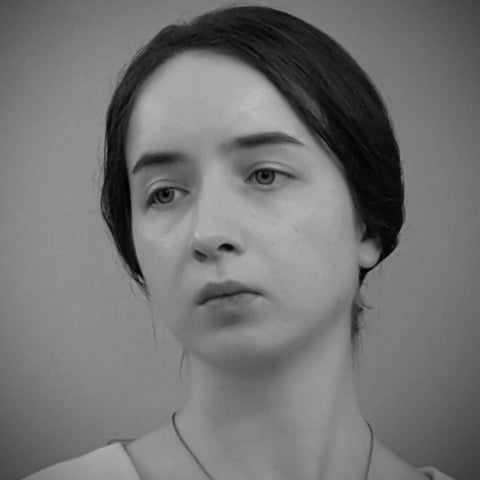Why Art Must Be Beautiful
 La Soledad, by Jean-Baptiste Camille Corot
La Soledad, by Jean-Baptiste Camille Corot
In attempting to answer a question that has long been on my mind— is art supposed to be beautiful?— or more to the point, why must art be beautiful?— I will speak of that form with which I am most familiar: the art of prose, and that of creative writing. I hope by answering why prose must be beautiful to give an answer applicable to all art.
The style of contemporary prose, as often as in art, gives the impression that the writer feels it their obligation to arouse disgust and despair as frequently as they can. I often find that such a story will even interrupt its narrative to point out such details, or imagine up such similarities, as provoke those emotions. One grows cynical and weary reading such works; the very tone feels provocative, with short sentences sounding in one's ears like the curt remarks of one without patience and not at ease. (Well, at least, that is how I have heard them read aloud.)
I often think that it would suffice here and there to say of the repulsive things, little more than that they are repulsive; and some mentions should be omitted altogether. That something is ugly, is probably all the readers need to know, and all they will remember, because it is all they need to remember. Then again— a clever writer can convey in few words, much for the readers to interpret— if they choose to do so. We have all known disgust, and we have all imaginations. For some, it is enough to remember the feeling of disgust; for others, it must be felt again. —Some will remember the feeling, and for any of a number of defendable reasons, they will let not their imaginations run away with every subtle allusion the writer has put forth. But other readers may not mind at that moment to have their stomachs turned, and so they will imagine, and remember.
I don’t put this forth as a rule; depending on the subject matter, sometimes the writer must be visceral and disgust must be aroused, even excessively. But what justification is there, at the other end, to make it a rule, and to go about it in a tour-de-force style, whatever the subject— though preferably the people and places and events are such as lend themselves to cynicism and disgust? Whether by example and allusion, or direction and declaration— it so appears to be the rule. The other style, meanwhile, is but “purple prose”.
“It’s reality!” one may well argue. —But to this I would respond, that there is so much reality, and we never relate it all: we are selective when we write. Consider one who journals: they do not, cannot, recite everything experienced in a day. They draw a narrative from things— more-or-less, for they do not know what events of tomorrow will raise to significance things of today and the past, and vice versa; what will cease to be and what will come to be, what will last from beginning to end and reveal all other things to have ordered themselves in deference to it. And should the journalist make a name for himself, later on someone may collect and abridge their journals, so as to present to the public something beginning to be like a novel. Some details, events, persons, years even, will be left out— while other littlest details will be treasured. And from this we do not gather that the abridger, if he has done his work well, has misrepresented a life— he has only drawn from that life, its essence.
So it is with prose— except that in fiction, significance lies not where emphasis ought to be placed, but where it is placed. If emphasis is given to ugliness, or meaninglessness, then significance lies with the ugliness and meaninglessness of the world the writer has created.
I who have been accused of writing purple prose, and you who believe in conveying “reality!”— we both believe in conveying reality, and more than reality— for to that more, we both order everything else. It isn’t “reality!” that defines your work and that is rejected in mine; it is the philosophy of the writer that determines what they will emphasize and omit, and furthermore, how their very prose will sing in the minds of their readers. For in their prose is conveyed— impressed upon the reader— the spirit of that philosophy. However much the work may deal with tragedy and evil, if as yet the prose is beautiful— truly beautiful— then the philosophy is beautiful.
—And beauty is obligated of the writer, as of all artists— for to say he conveys a philosophy is to only begin to touch upon the truth about the artist’s vocation. For that the writer is to his world like God, he is to the readers, a prophet. The artist reflects upon the Creation, and by his reflection, his reflective works— he speaks to us of the nature of all things— to reveal truths, or to tell lies. He is a prophet true or false. He either reveals that the World is redeemable— for beneath everything there is beauty, for though the World is fallen, God has not forsaken us, and He is ever calling us back to Him, and shall in time reunite Heaven and Earth— or he lies and says that the World is, beneath all, ugly… and everything that follows from that. He sculpts La Pieta— or he paints Guernica.
In essence, if the artist is to speak for God, he must speak as God would do. Sometimes dread emotions must be aroused in the excess, even to the exclusion of all others. But if it must be, then it must be because we are seeing everything through the mind of the character or characters who lead the story, and who have been so injured and oppressed that this is all they see of their world; this vision cannot be the author's, whose own good vision must— and if he has good vision, will— in some way perhaps so subtle it is inexplicable, or so overwhelming it is also inexplicable, shine through the darkness of the protagonist's vision, as light through a black veil. The protagonist may perceive his world— the World— as ugly, meaningless, arbitrary— as in some evident and inherent way, a world not come from God— but as the author knows better, believes hopefully: that is not the protagonist's world… and if he is truly the artist, it will come across to the reader, even if only unconsciously. And then the reader will, if speaking from the heart and not from such an excellent education as our modern curriculums are so good at imparting, say that the work is beautiful.
So it is with the Gospels— so it is with the four records of Christ’s crucifixion, and of the very image of Our Lord on the Cross. To write so, is a skill to be learned from the masters, and cultivated in a mind seeking to perceive the World in the same way— as, beneath all tragedy and evil, a magnificently beautiful World.
July, 2023

